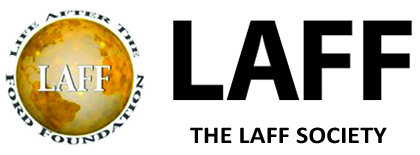
Given the shortage of time, I will focus my remarks on the subset of US foundations that make grants directly to grantees in China, whether or not they have resident staff in China. Not included are US foundations that grant funds to international intermediaries (such as Oxfam or World Resources Council), which in turn fund activities in China, or support the study of or exchanges with China (such as Luce and Freeman). In excluding these groups as well as those in other countries (such as Volkswagen, Adenauer and Ebert in Germany or Toyota, Nippon and Sasakawa in Japan) I do not mean to denigrate in anyway their important contributions.
Direct Grantmaking by US Foundations in China has evolved over the past 100 or so years – 3 broad periods
(1) Pre-1950 – Rockefeller Foundation (public health and higher education – physics bldg at Nankai University), China Medical Board (Peking Union Medical College), Harvard Yanching Insitute (six Christian universities during 1930's and 40's )
(2) 1950-1978 – support to major centers of Chinese studies in US, UK, Australia, HK, India, Taiwan + library collections, pre- and post-doc research. In mid 1970s efforts toward normalization of relations (National Committee on US-China Relations, CSCPR (initial exchanges)
(3) 1979-2009 – As China began to reform and opening to the non-communist world, US foundations began tentative explorations to see what they might do. Ford Foundation (FF) and The Asia Foundation were among the first to put their toe in the water or, like Deng Xiaoping, to search for the stones to cross the stream. Others followed and the field has continued to evolve.
Since 1979, 3 successive stages using Ford Foundation (FF) as an example:
- 1979 special appropriation of $200k. Mutual access and understanding (China Academy of Social Sciences, The Committee on Scholarly Communication with The People's Republic of China, US-China Arts Exchange Center, Winrock International) visits, conferences, workshops
- Early 1980s, shift from exchanges to capacity building in three fields – economics education and research (Harvard Professor Dwight Perkins was involved), law and legal reform (Harvard Professor Bill Alford was involved), and international relations including area studies. These fields were ones that were important to China's reform and opening, in which FF had experience elsewhere, and could be managed by a part-time program officer working from NY and using joint committees for decision making.
Enabled FF to broadened institutional connections beyond CASS and CAAS to include leading universities, State Council and/or ministry related research institutes. Also enabled FF, the case of area studies, to expand its geographic reach beyond US to include Africa, Middle East, LA.
- 1988 with the opening of the office in Beijing, three Program Officers plus the Rep on the ground – new programs in poor area development, RHP, and higher education &community colleges; greater outreach within China; broader range of institutions GONGOs and NGOs. Direct Grantmaking by US Foundations in China has grown significantly in recent years.
Statistics: Indebted to Foundation Center – Interactive map of direct grants by US grantmakers to non-US recipients (2003-09). During the period 2003-9 US foundations grants to Chinese recipients increased from $26m in 2003 to a peak of $58m in 2007, then declined to $40m in 2008 and to only $5m so far in 2009 (presumably reflecting primarily the state of the US economy). The number of grants has ranged from a low of 176 in 2004 to a high of 364 in2006. The number of recipients has ranged from 161 in 2003 to 260 in 2004 and to some 200 in each of the past three years. Unfortunately, for our purposes, the IFC data does not total the number of US grantors.)
Y $ G R
2003 26m 286 161
2004 30m 176 260
2005 36m 252 137
2006 40m 364 202
2007 58m 322 192
2008 40m 322 192
2009 5m 33 24
Nature of Grantmaking since 1979 (as indicated earlier) has changed in 3 significant ways:
- Increasingly diverse range of recipients: National to provincial, urban/rural, ministries, research institutes, universities, ministries, GONGOs and NGOs
- Growing number of grantors: private foundations (FF, TAF plus Trace, Energy, Gates, Clinton + diaspora Cyrus Tang); corporate (Intel, Caterpillar, Eastman Kodak, Merck, Agilent Technology, GE, UPS, BP)
- Broader range of issues: environment, poverty alleviation, children's and women's rights, legal aid, RHP
Why the Changes?
In US
- Growth in US economy, increased foundation endowments and in wealth of diaspora
- Major new foundations
- Energy, Gates and Clinton- Greater societal engagement with China - governmental, academic, commercial, nonprofits
- Increasing appreciation of China's growing international importance
In China
- Reform and opening. Shift from all embracing party-state. Disaggregation
- Changing roles and responsibilities vertically and among different sectors of society. Big Government, small Society to big Society, small Government. Greater space for NGOs. Tensions: reform vs. control. Relaxation vs. restriction. Cyclical vs. secular
- Evolution in fiscal and regulatory framework governing nonprofits and foreign foundations 1999, 2004 regs
- Growth in local NGOs, emergence of intermediary organizations, and now private foundations.Looking ahead

